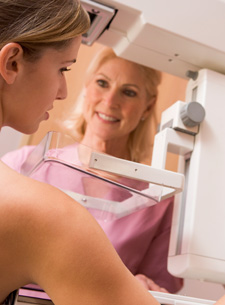A mammogram is a low-dose x-ray exam of the breasts to look for changes that are not normal. The results are recorded on x-ray film or directly into a computer for a doctor called a radiologist to examine.
A mammogram allows the doctor to have a closer look for changes in breast tissue that cannot be felt during a breast exam. It is used for women who have no breast complaints and for women who have breast symptoms, such as a change in the shape or size of a breast, a lump, nipple discharge, or pain. Breast changes occur in almost all women. In fact, most of these changes are not cancer and are called “benign,” but only a doctor can know for sure. Breast changes can also happen monthly, due to your menstrual period.
Our gynecologic services range from pap smear to in-office surgical procedures. The treatment of abnormal pap smears is not the only thing we do. Heavy or abnormal menses, infertility, birth control, menopausal symptoms, vaginal infections, urinary tract infections, urinary incontinence, pelvic pain, pelvic floor reconstruction, osteoporosis, minamlly invasive laproscopic surgery, etc.
Breast Imaging Reporting and Database System (BI-RADS)
 0 – Need additional imaging evaluation. Additional imaging needed before a category can be assigned
0 – Need additional imaging evaluation. Additional imaging needed before a category can be assigned
1 – Negative Continue regular screening mammograms (for women over age 40)
2 – Benign (noncancerous) finding Continue regular screening mammograms (for women over age 40)
3 – Probably benign Receive a 6-month follow-up mammogram
4 – Suspicious abnormality May require biopsy
5 – Highly suggestive of malignancy (cancer) Requires biopsy
6 – Known biopsy-proven malignancy (cancer) Biopsy confirms presence of cancer before treatment begins
How often should I get a mammogram?
The United States Preventive Services Task Force (USPSTF) recommends:
- Women ages 50 to 74 years should get a mammogram every 2 years.
- Women younger than age 50 should talk to a doctor about when to start and how often to have a mammogram.